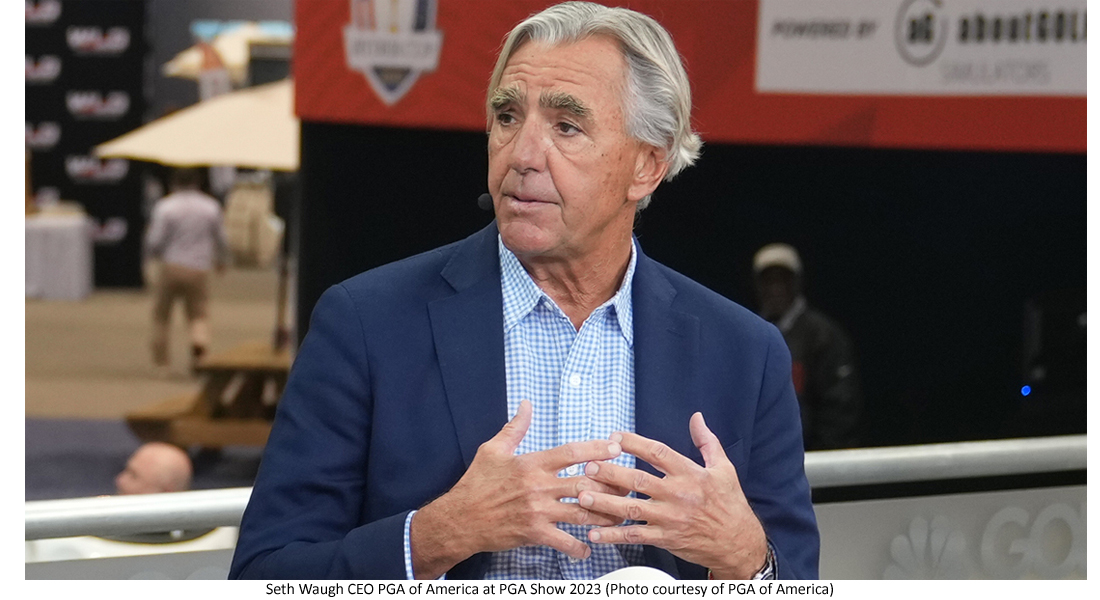 A letter to from the PGA of America in conjunction with PGAs worldwide may have sealed the fate of the Model Local Rule (MLR) placing limits on the carry distance of the balls played by elite golfers, essentially those on men’s professional tours and in national championships.
A letter to from the PGA of America in conjunction with PGAs worldwide may have sealed the fate of the Model Local Rule (MLR) placing limits on the carry distance of the balls played by elite golfers, essentially those on men’s professional tours and in national championships.
The two-page letter signed by Seth Waugh CEO of the PGA, the organization representing the club golf professionals that run our game day to day, in part said, “…the proposed changes could seriously interrupt the current momentum in the game and be fundamentally damaging and detrimental in the long run.”
Quite a statement but Waugh followed that with, “We are also very aware that there are sets of data that conflict with the R&A and USA materials. This is confusing and, in our view, needs to be considered fully, reviewed, and clarified prior to any final decision being made.”
The point in contention is the USGA and R&A creation of the MLR rolling back the allowed performance of golf balls and since the rule is not to apply to recreational play it would effectively split golf’s rules into “us” and “them;” something most of golf’s stakeholders say is fraught with negative consequences.
Two weeks previously a memo from PGA Tour Commissioner Jay Monahan used similar language pointing out the MLR “is not warranted and is not in the best interest of the game” enjoying all-time participation.
The operative question today though is what will the ruling bodies do…stick with the MLR, drop it, or try for a compromise?
Or is there some other way for them to save face and revive their relevancy to the game that seems to have passed them by?
Heads of both organizations, the USGA and R&A, have publicly repeated the stance that doing nothing is not an option. Therefore, for now it appears since Fred Ridley Augusta National Chairman, home of the Masters, has said they support a ball roll back, the U.S. Open, the British Open and the Masters will play a new shorter ball and the rest of the professional tournaments run by the PGA Tour and PGA the old ball.
The distance the ball travels is not the crux of the problem even as pro-roll backers cite stats about driving distance and myriad other numbers. As anyone who has ever played or just watched on television knows it’s scoring that counts and some would have us believe records are being busted weekly.
Not true. Below are PGA Tour scoring statistics for the lowest average, the 100th place player and the Tour overall average as well as ten and twenty years ago. Draw your own conclusions but it is reasonable to be of the opinion that the differences are not enough to make game-shattering conclusions such as a ball performance roll back justifiable.
2022-2023 1st-68.28, 100th-70.47, Tour average-70.70
2012 1st-69.63, 100th-71.01, Tour average-71.32
2002 1st-69.00, 100th-70.98, Tour average-71.29
The center of the discussion is the solid core ball which is dramatically longer than the previous balls of wound construction with Titleist’s Pro V1, the most played solid core ball being introduced in 2000.
It is generally acknowledged driver design has eked out the most yardage possible within the present equipment rules and any other gains in distance being attributable to course conditioning—firmer for more roll—and the increasing athleticism of elite players. Insiders know the bottom line is pros are swinging faster giving them more clubhead speed and more distance.
Regular golfers, so-called recreational players, according to a survey of almost 45,000 golfers done by TaylorMade Golf showed that an overwhelming four to one do not agree with the MLR and by the same margin are against splitting or bifurcating equipment into an elite category. Additionally, 77% said the distance pros hit the ball is not a problem.
So where does that leave the USGA and R&A in this mess they created?
The quick answer is out of touch with golf and golfers by focusing on a problem that doesn’t exist.
